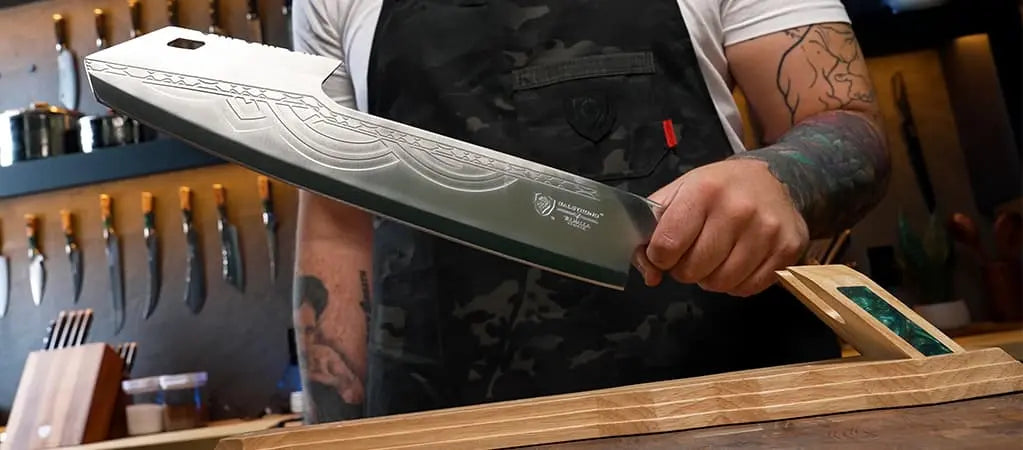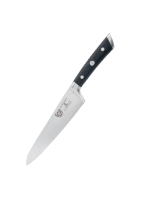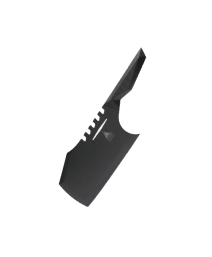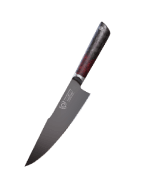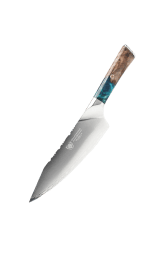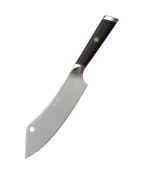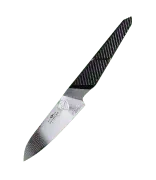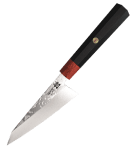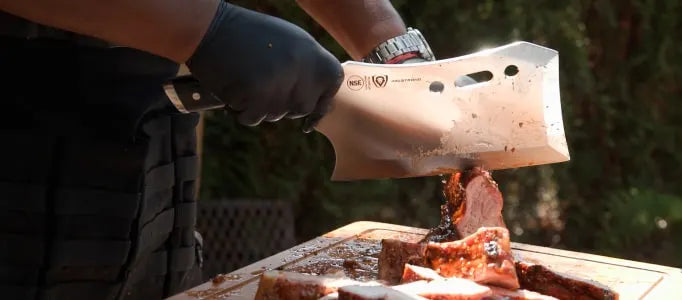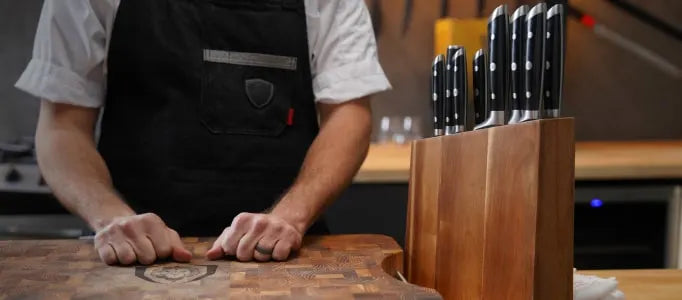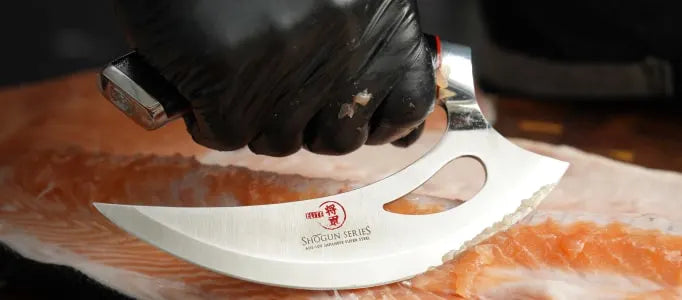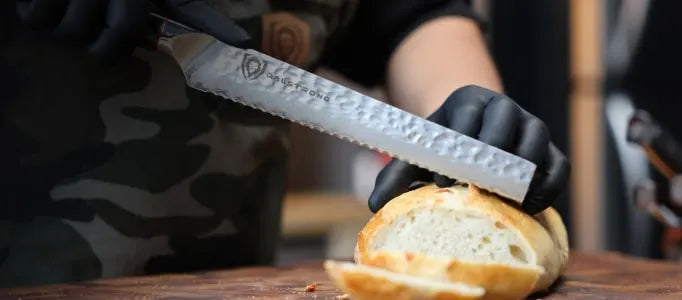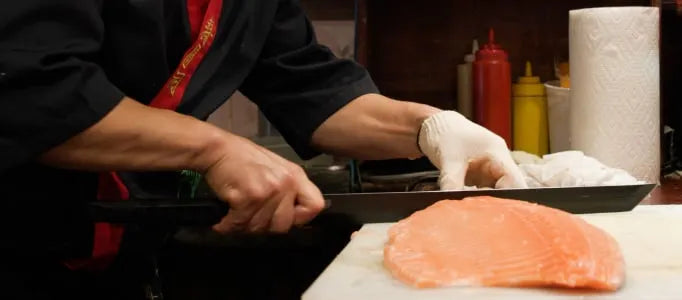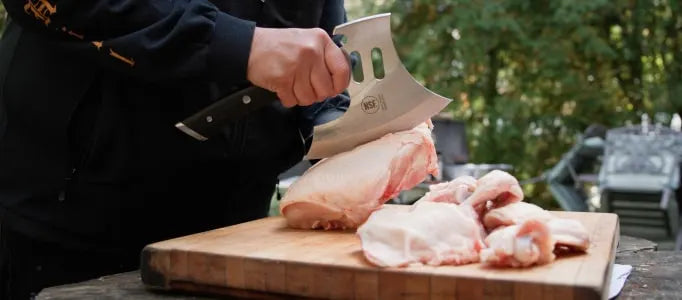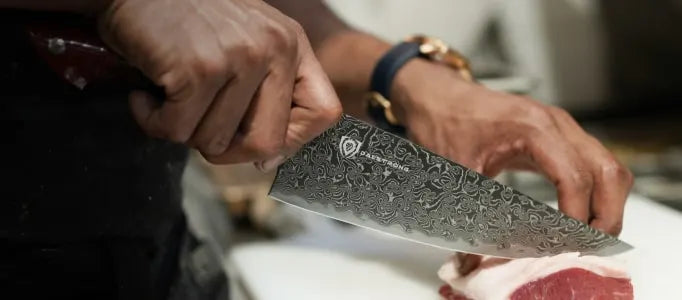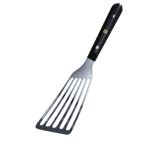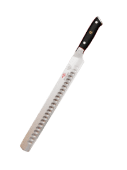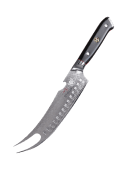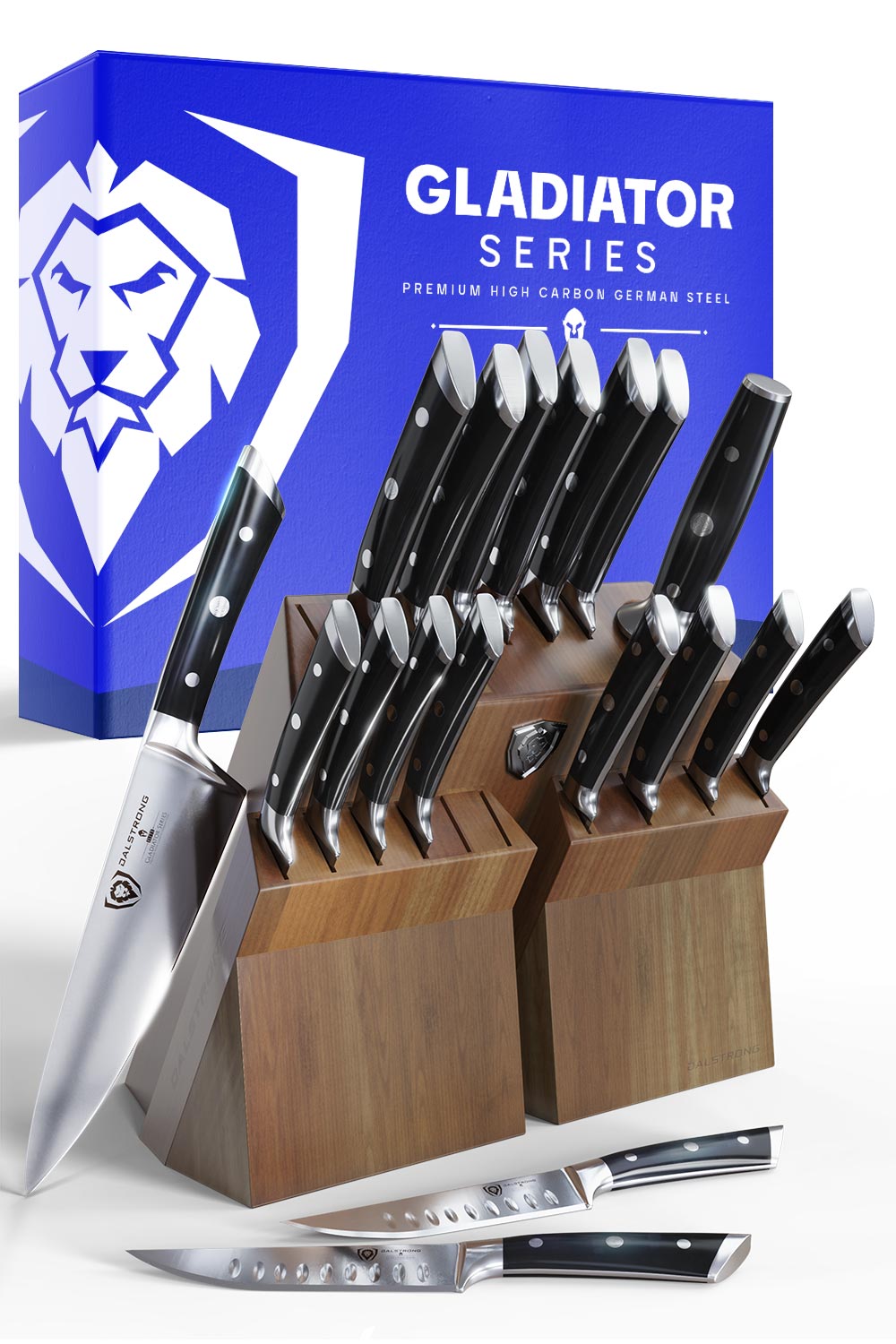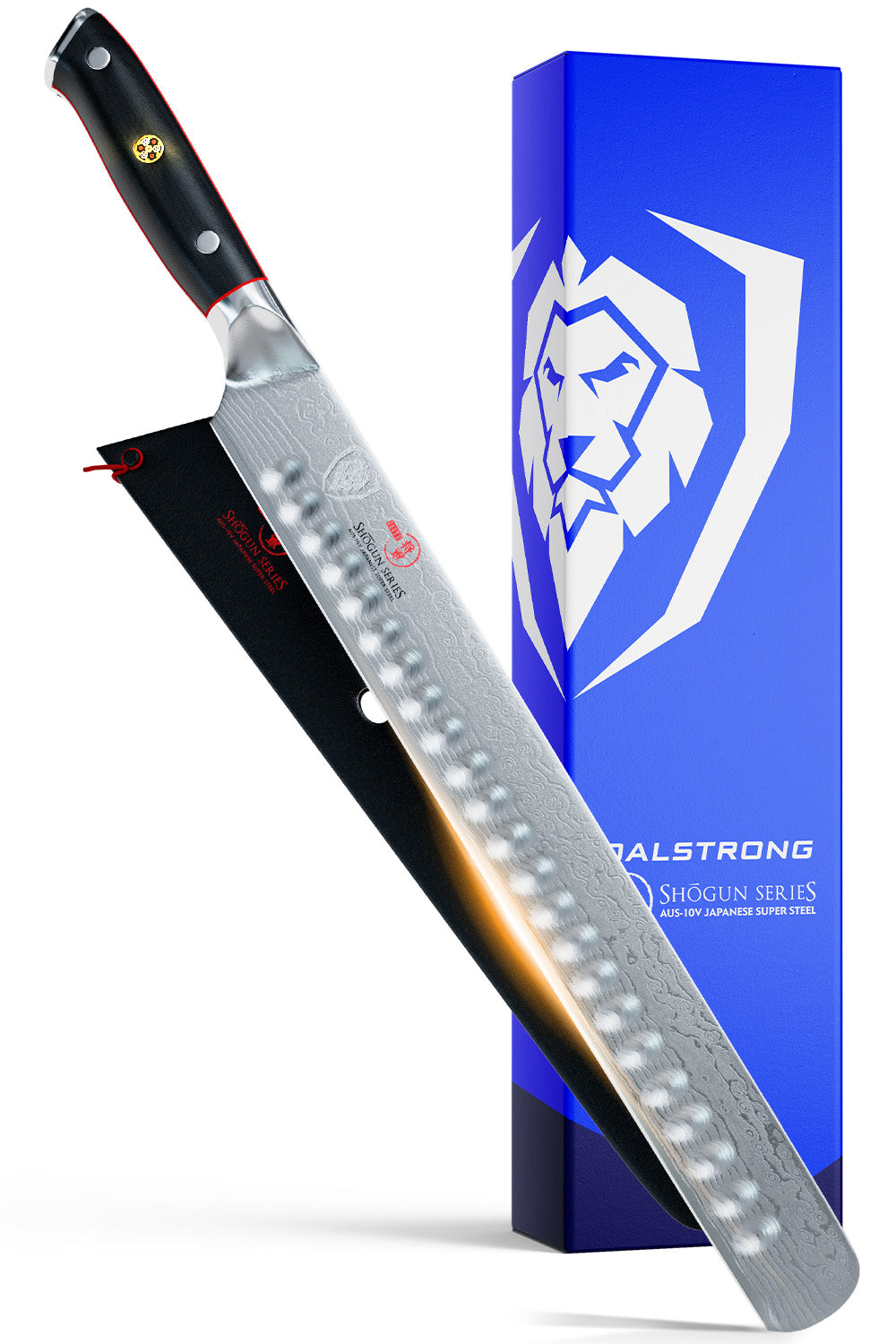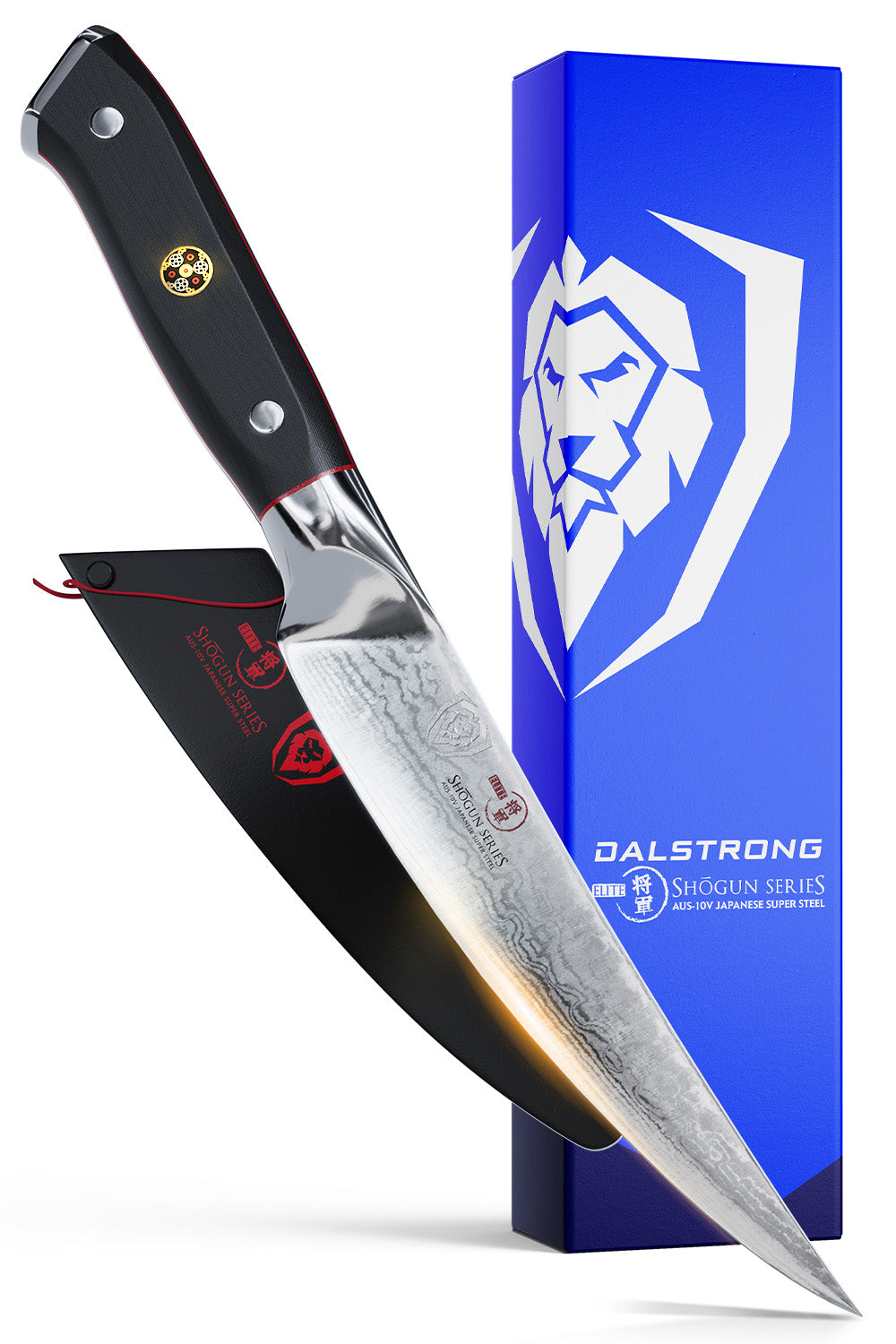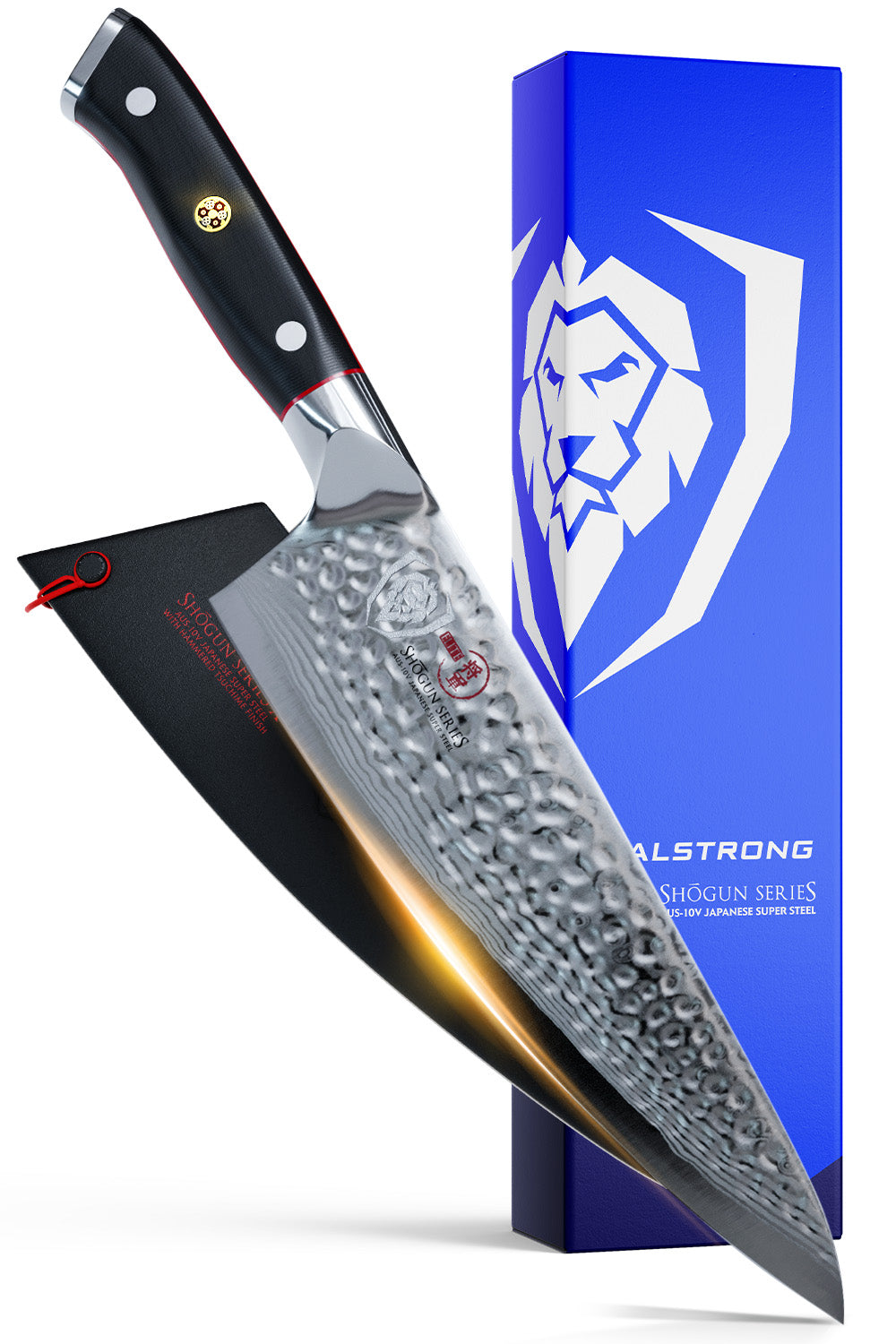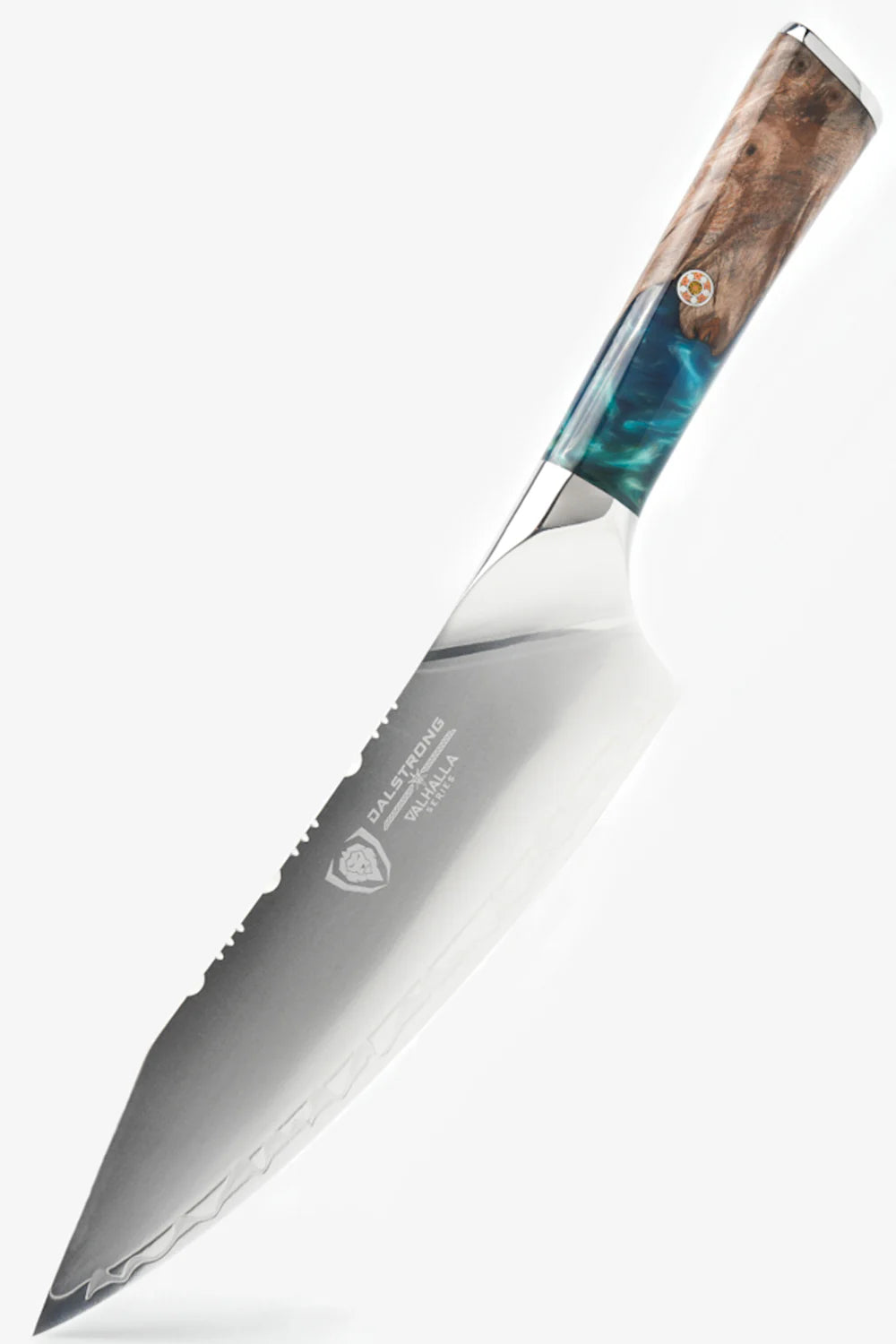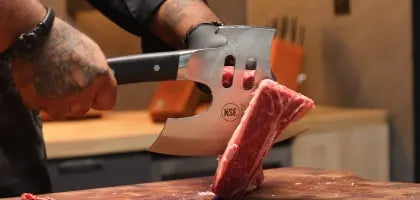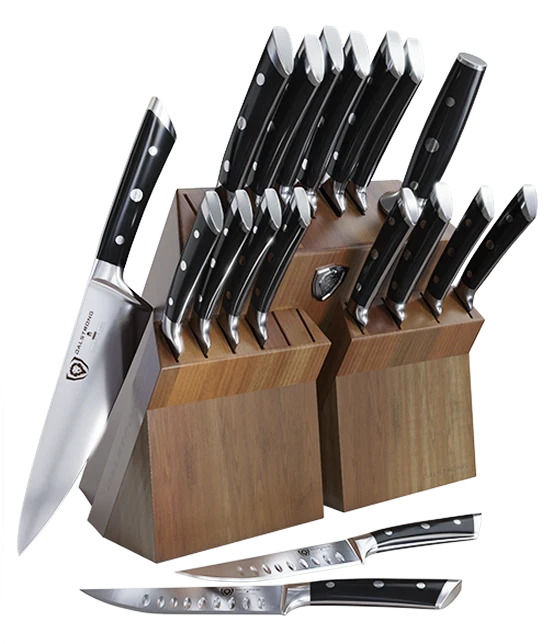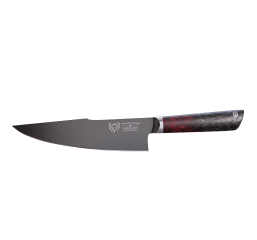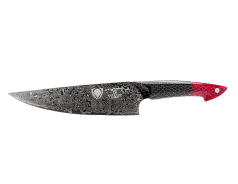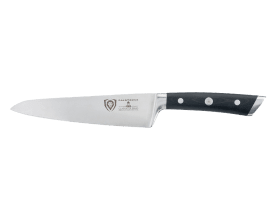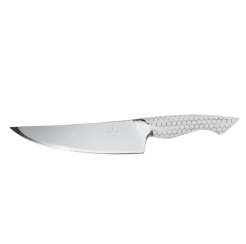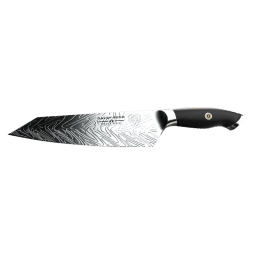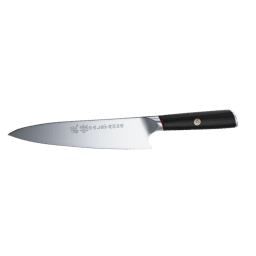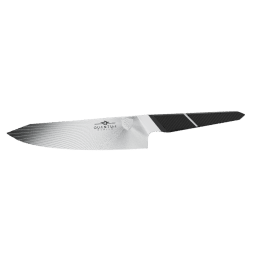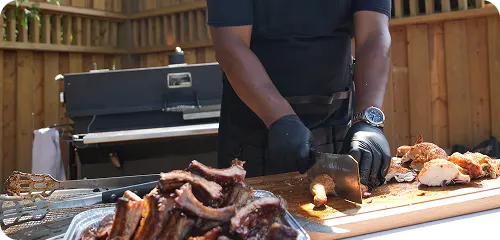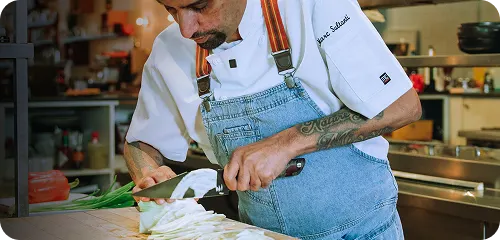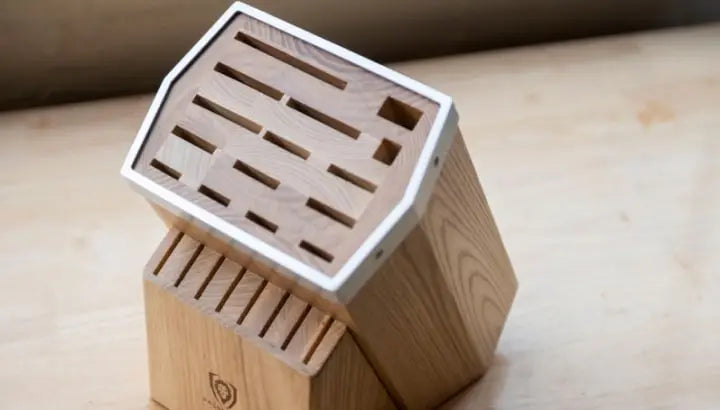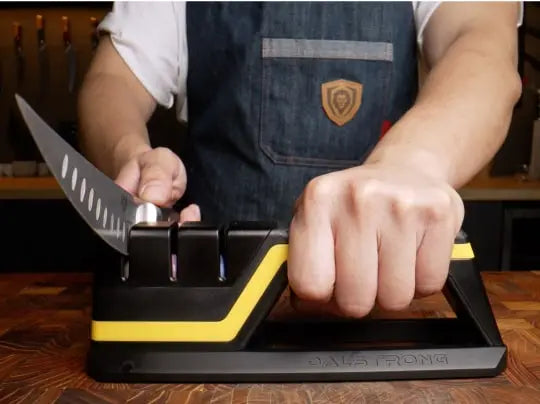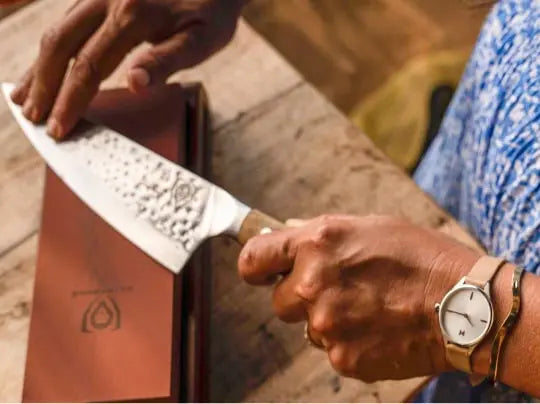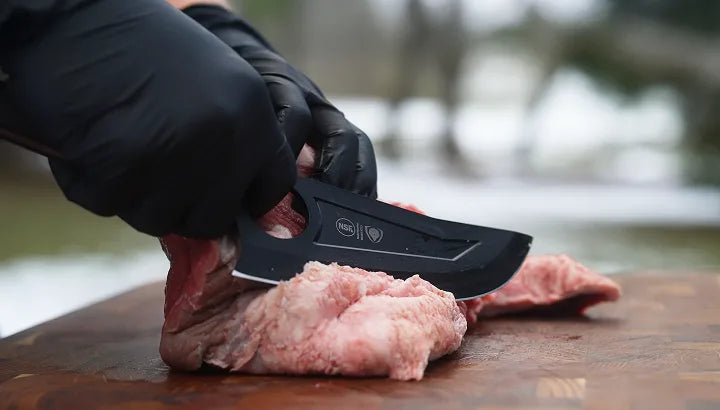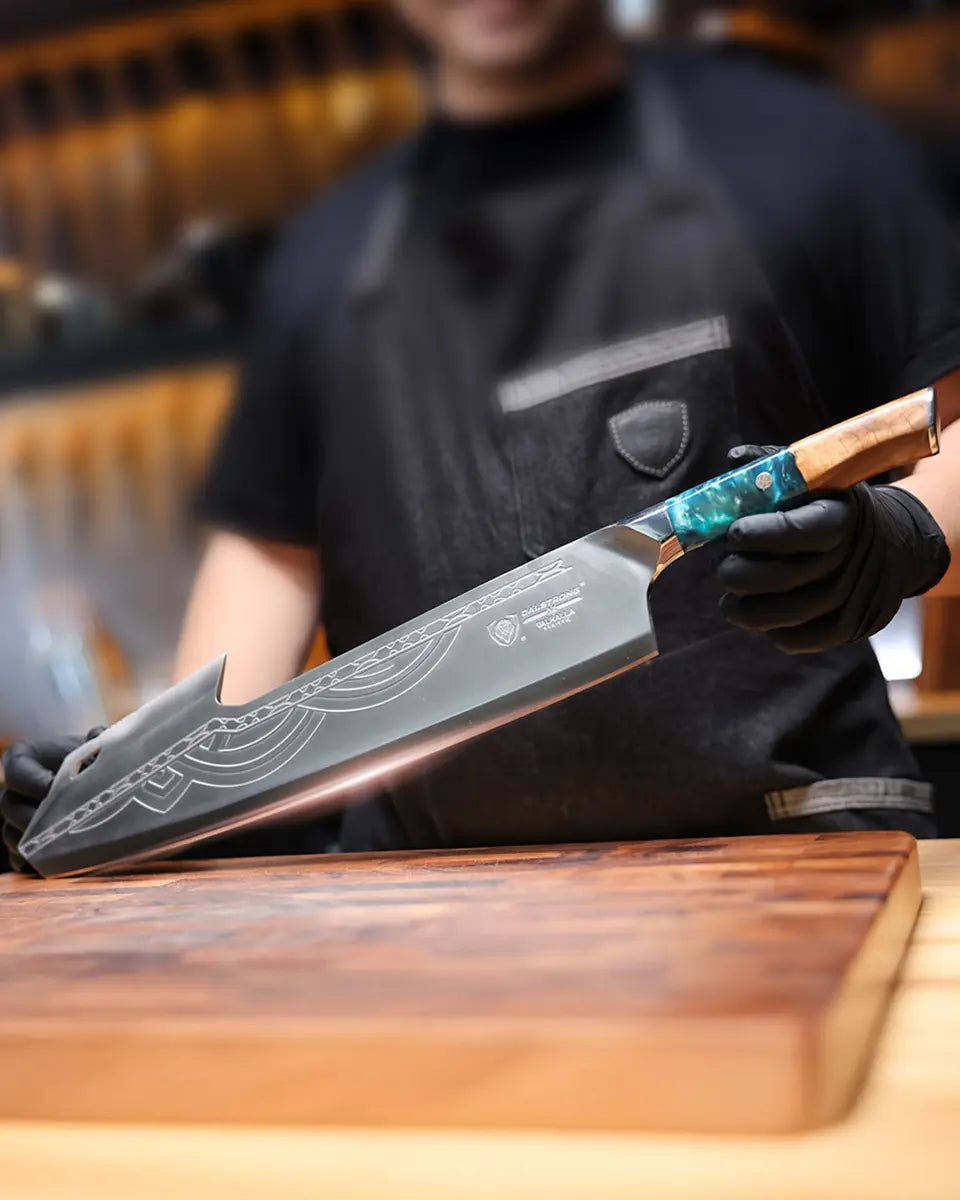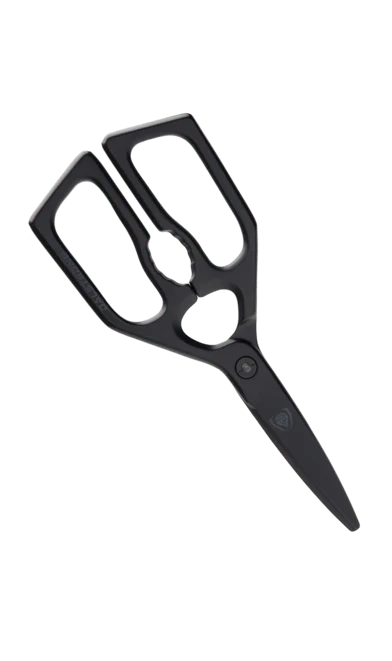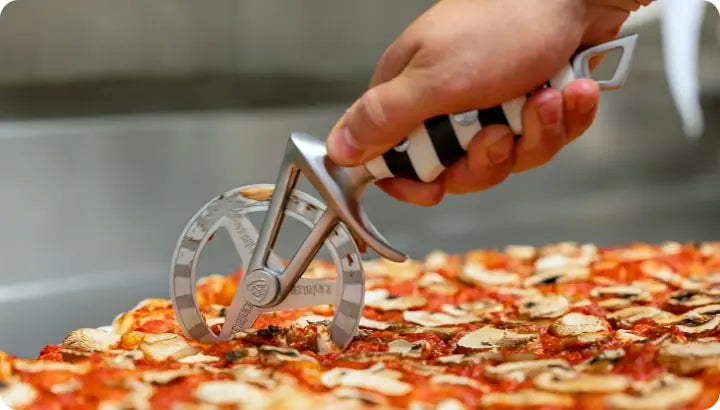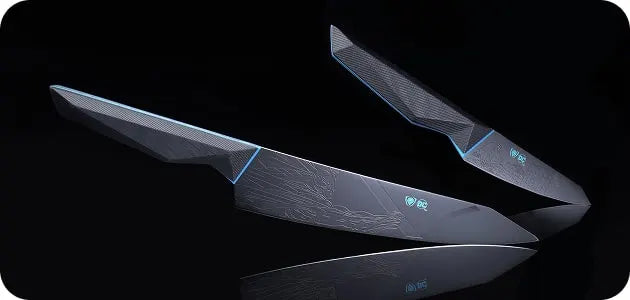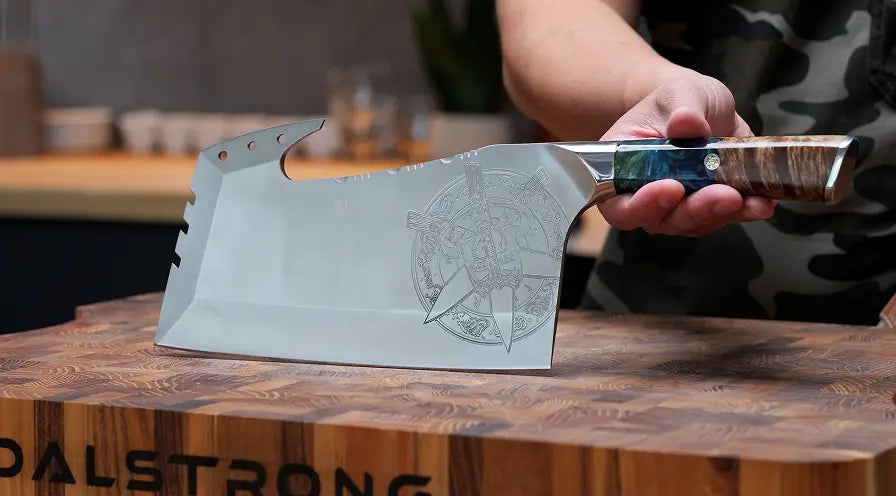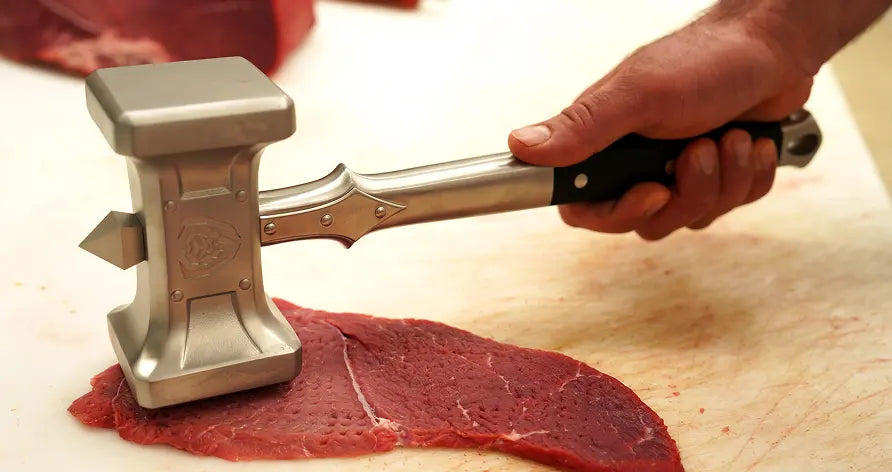6'' Nakiri Knife | Phantom Series | Dalstrong ©
HOW TO CUT AN AVOCADO
- Place the avocado on a cutting board.
- Cut the avocado in half.
- Stick your knife in the avocado pit.
- Twist the knife to remove the pit.
- Score the avocado flesh and scoop out with a spoon.
- Alternatively, use a spoon to loosen the flesh from the skin and then scoop out.
3.5'' Paring Knife | Gladiator Series | Dalstrong ©
What We’ll Cover
- What Is An Avocado?
- Picking Avocados
- How to Store Avocados
- How to Cut an Avocado
- Knife Recommendations for Cutting Avocados
- The Best Guacamole Recipe
- Frequently Asked Questions
1. What Is An Avocado?

Avocados are a fantastic fruit. They might be as close to perfect as food can get. They taste great, they are good for you (generally), they go well with just about everything (avocado toast, avocado salad, you name it), and apparently they’re even good for your skin and hair. I’m a fan.
Now that we’ve established that I’m an avocado enthusiast, I want to talk about a couple downsides to the noble avocado. For one, the fruit is extremely sensitive when it comes to the weather -- they’re prone to quick spoilage, and finding one at the perfect state of ripeness is extremely tricky.
They also present a challenge for those of us who didn’t grow up working with them: cutting and slicing them feels like an intimidating task when you’ve never done it before. There’s so much that could go wrong! But don’t worry: there’s actually nothing to it. In this guide, we’ll discuss how to pick the best avocado, how to cut an avocado, how to store them, and even share with you an incredible guacamole recipe.
2. Picking Avocados
5.5'' Utility Knife | Crusader Series | Dalstrong ©
If you’re in the United States, you’re extremely fortunate in that you have avocados available all year round. From February to September, avocados are in season in California; when they’re not, they’re supplemented from crops in Latin America. So unlike a large chunk of the world, you’re able to pick up avocados at the supermarket or greengrocer whenever you feel in the mood for some guacamole, avocado salad or avocado salsa... (or avocado toast, if you’re a millennial).
Because of how sensitive avocados are to temperature, you’re likely to find a pretty wide variety of states of ripeness when you’re browsing the produce section. Your best tools to figure this out are your senses. Let’s talk about how to identify when an avocado is ready, and what to expect from each of the different states
If an avocado feels firm and has a bright green color: This is an unripe avocado. Hold it in your hand and apply some gentle pressure -- if it still feels firm and does not yield, it will be ripe in 4 or 5 days. Buy these if you’re planning ahead.
If an avocado feels softer (but not quite soft): This avocado is “breaking” (or almost ripe). You can expect them to be fully ripe in 1 or 2 days. These will vary in color.
If an avocado yields to gentle pressure: This is a perfectly ripe avocado, ready to eat. These avocados may have a darker color, but this will vary. These are perfect to eat the same day you purchase them; store them in the refrigerator if you plan to eat them in a day or two.
If an avocado feels mushy to the touch: This avocado is likely overripe. You’ll find it has a rancid smell as well. Not great for eating.
3. How To Store Avocados

As we’ve established, avocados are pretty sensitive. This may make some folks a bit hesitant to buy and handle them. Don’t be! It’s tricky, but it’s so worth it.
Once you’ve determined the state of ripeness of your avocado, it’s just a matter of deciding when you’re going to consume it. If your avocado is ripe and you’re not going to eat it today, you can stick it in the fridge and it’ll last for 1 or 2 days. Maybe 3, but that’s stretching it. The cold slows down the ripening process.
If your avocado isn’t quite ripe yet, leave it out on the countertop. Just make sure to check for ripeness daily as this is a tricky variable and you don’t want to miss your window.
And if you’ve cut your ripe avocado and you want to save some leftover avocado for later, it’s a matter of limiting its exposure to oxygen as much as possible in order to prevent oxidation. You can “seal” the surface of the flesh with some lime or lemon juice (or even olive oil), then put some plastic around it so that it clings to the avocado. Then store in the refrigerator. It won’t keep too long, but this will buy you another day.
4. How To Cut An Avocado
If it’s your first time cutting an avocado, I totally understand why it would seem daunting. It seems like the thing you would need serious knife skills to pull off. You don’t want to damage the flesh or risk doing anything that puts this wonderful fruit in less than optimal conditions. Also what the heck do you do about that giant seed in the middle?!
Fear not. It’s actually much simpler than it seems. All you need is a quality knife, an avocado, and a cutting board. For the benefit of all avocado newbies out there, let’s talk about how to cut an avocado like a pro.
How to cut an avocado:
-
Cut the avocado in half. Place your avocado on a cutting board and use a sharp knife to slice through the avocado lengthwise until you feel the knife hitting the pit. Then keep the knife steady as you rotate the avocado to make a cut all around the pit. Then simply twist both halves apart. You did it!
- Remove the seed / pit. It’s not as hard as it looks. Simply aim your knife at the pit and whack into it with some force (you want to keep the knife from slipping). Once it’s firmly lodged in, you can simply twist the knife and pull out the pit. From here, you have a couple options.
-
If you’re dicing, score the flesh (without piercing the skin). Simply use the tip of your knife to score the avocado flesh, making little squares. Then just scoop out the diced avocado with a spoon.
-
If you’re slicing, simply scoop it out and slice. You can use a spoon to loosen the skin gently, then scoop out the flesh in one piece. If the avocado is ripe, it should come out pretty easily. Then all you have to do is place the piece flat side down on the cutting board and use the tip of your knife to cut out avocado slices.
See? Way simpler than you thought. But what tools do we need to accomplish this task?
5. Knife Recommendations for Cutting Avocados
In order to cut avocados easily and without exerting much effort, you need a good sharp knife and a cutting board. Here are some of our suggestions for the former.
1. Chef's Knife 8" | Shogun Series X | Dalstrong ©
This is an incredible 8” chef’s knife from Dalstrong’s acclaimed Shogun Series X. Not only will this help you cut your avocado, it will be an all-around kitchen powerhouse.
PROS:
- Features an AUS-10V Japanese super steel core, which slices avocado like butter.
- Extremely sharp at 8-12 degrees per side, with great edge retention.
- Absolutely gorgeous design, with the Dalstrong Tsunami Rose pattern.
- Ergonomically designed, G-10 Garolite handle, highly impervious to heat and moisture. Comfortable to hold, too.
CONS:
- We’re recommending this not only to cut avocados, but as an all-around kitchen tool. If you’re looking strictly for something to handle avocados with, you might want to look at a smaller blade.
- This is a premium product, and it sits towards the top of the price range in this list.
2. Chef's Knife 8" | Gladiator Series | NSF Certified | Dalstrong ©
Here’s another 8” chef’s knife, this time from the Gladiator Series. An incredible kitchen tool that won’t break the bank.
PROS:
- Precision forged, ultra sharp, wear resistant, single-piece, high carbon German ThyssenKrupp Steel.
- Sharpened to 16-18 degrees per side; a perfect balance between sharpness and resilience.
- Beautiful hand polish makes this a truly classy-looking knife.
- Full tang handle, ensuring robustness and quality.
CONS:
- Just like the previous chef’s knife, this is more of a catch-all tool. If you’re looking for something smaller, check out a paring or utility knife
- This knife is also a bit on the lighter side when compared to the Shogun Series X chef’s knife above.
3. Bird's Beak Peeling & Paring Knife 3" | Shogun Series | Dalstrong ©
This awesome bird’s beak paring knife from the Shogun Series is the ultimate knife to peel an avocado. At 3 inches, it’s the perfect size for working with produce and making very precise cuts.
PROS:
- Perfect knife to remove the pit or peel an avocado.
- AUS-10V Japanese super steel core.
- Extremely easy to clean and take care of.
- One of the coolest-looking paring knives on the market, beautifully engraved and featuring the Tsunami Rose blade pattern.
- Built to last a lifetime.
CONS:
- Its small size makes it ideal for very close and precise cuts, but some home chefs might want a bigger knife blade.
- As with any paring knife, it’s best for very specific uses! If you’re looking for something that can be used for more general purposes, check out the chef’s knives recommended above.
4. Paring Knife 4" | Delta Wolf Series | Dalstrong ©
An awesome pairing of looks and performance. The Delta Wolf Series was named after the Special Operations Force of the same name, and it is more than fitting.
PROS:
- Hand-sharpened to a razor-sharp 8-12 degrees.
- Ultra-sharp, wear-resistant, high-carbon steel.
- Black, non-reflective titanium-nitride coating for corrosion resistance.
- Just look at it. An astonishingly gorgeous knife, possibly one of the prettiest ones you’ll ever buy.
CONS:
- At 4”, it sits between a traditional paring knife and a utility knife; some home cooks might prefer to go for either of those options.
- If you’re more of a traditionalist, you might find this knife a bit too flashy-looking for your taste.
5. Utility Knife 5.5" | Shadow Black Series | NSF Certified | Dalstrong ©
Ah yes, the Shadow Black Series -- the knife for the person who wants a kitchen tool that looks like something out of a futuristic sci-fi film. Thankfully, this 5.5” utility knife doesn’t just look cool -- it’ll serve you for all manner of kitchen tasks.
PROS:
- Precision forged, wear-resistant, single-piece, high carbon vacuum treated steel.
- Comfortable, ergonomic handle inspired by the F-117 Nighthawk Stealth Fighter.
- An awesome-looking, radically sleek design that’s sure to turn heads.
- Incredible value for the price; also a great gift for the knife lover in your family.
CONS:
- This is a very unique-looking knife. If you’re the type of person who wants your kitchen tools to fit each other, you might feel this one sticks out too much.
- The titanium-nitride coating makes sharpening feel a bit more daunting than it normally does (but don’t worry; there’s nothing to it).
6. The Best Guacamole Recipe

Alright, so now that you know how to cut an avocado -- and you’re well-equipped with the tools to do it -- let’s apply that knowledge to a real-world scenario. And one of the most common reasons for folks to want to cut an avocado in the first place is to make that most wonderful of dips: guacamole.
The beauty of guacamole is in its simplicity. Sure, we could get fancy and start adding all kinds of esoteric ingredients to the mix, but that’s truly a case of gilding the lily. The best guacamole recipe keeps things simple: ripe avocados, salt, lime, onions, cilantro, and chopped tomatoes. That combination of ingredients will reward you with a truly heavenly result.
Ingredients list
|
Ripe avocados |
2 |
|
Salt |
¼ tablespoons |
|
Fresh lime or lemon juice |
1 tablespoon |
|
Minced red onion (or thinly sliced green onion) |
2-4 tablespoons |
|
Finely chopped cilantro |
2 tablespoons |
|
Chopped ripe tomato |
1/2 |
|
Jalapeño chilis (optional) |
1 or 2 |
Steps:
-
The first thing to do is to cut the avocado. Remember the process we just outlined above? Just follow those steps! See how it all ties in together? The magic of blogging. Once your avocado is cut, place it in a bowl.
-
Next up, mash the avocado flesh using a fork. It’s important that you don’t overdo it and end up with a loose, gloopy mess -- guacamole should retain some of its “chunkiness”.
-
Add in the rest of the ingredients. Sprinkle in the salt and lime or lemon juice. The acidity of the juice will cut through the richness of the avocado beautifully, and also aid in delaying browning. Then add in the onion, cilantro, pepper, tomatoes, and (if you opted for it) chili. This should be done to taste.
- Serve immediately! Remember that avocado is extremely sensitive, so it’s important that the guacamole is served as fresh as possible. If you’re making it ahead of time, you can place some plastic wrap above the guacamole and then press down to keep oxygen from reaching it.
There you have it. An easy avocado recipe that will have all your guests clamoring for more.
7. Frequently Asked Questions
3.5'' Serrated Paring Knife | Gladiator Series | Dalstrong ©
Why does my cut avocado turn brown?
Ah yes, the scourge of every avocado enthusiast. The reason this happens is because there’s an enzyme in avocados that causes its flesh to oxidize when it’s exposed to air, which turns it into that nasty brown color. Ever notice how an avocado is often green underneath the avocado pit but brown on the exposed area that surrounds it? That’s the reason -- what’s under the avocado pit is protected from the oxygen, keeping it from oxidizing.
There are a couple solutions for this. One is to simply limit the exposure of the cut surface to oxygen by putting a piece of plastic wrap (or other airtight container) over the cut surface and then sticking it in the fridge. Some people also squirt it with lime or lemon juice, which delays the process for science-y reasons.
Is it true that keeping the avocado seed in half of the avocado prevents it from browning?
My mother swears by this method, but unfortunately it’s one of those pieces of passed-down cooking knowledge that’s actually a myth. Well, a partial myth -- as we noted above, the pit will prevent browning in the area directly below the seed (because it keeps it from being exposed to oxygen) but that’s really it. There’s no magical property to avocado seeds that will keep it from browning the rest of it.
If you want to test this, try putting a lightbulb in your guacamole instead of the avocado seed -- you’ll see it creates the same effect, and the guac directly below the bulb will stay green. Just remember to remove the lightbulb before you start eating..
Is it best to ripen an avocado at room temperature or refrigerator?
Well, the cold actually slows down ripening, so it really depends on how quickly you need the avocado to be ready. If your goal is to have it ripen as fast as possible, all you have to do is store it at room temperature on the countertop and leave it alone for 4-5 days. But if you want to slow the process down, the fridge is a great tool for that.
Can you eat avocado raw?
Heck yeah. I encourage it. Just like any other fruit, avocado is perfectly delicious and edible before it’s cooked or even seasoned. In fact, avocados are most often eaten raw -- they can get bitter once heated. That said, they are also quite delicious when cooked right, so don’t be afraid to experiment.
When can babies start eating avocados?
As soon as your baby is ready to eat solids, which is usually around 6 months of age, avocado is a fantastic choice for them. Ripe avocados are soft and carry a lot of nutrients, not to mention being delicious.
Can I use avocado instead of butter?
Avocados are fantastic as a butter substitute. They might be the only food that goes just as well on toast as it does on salad. You’ll cut down on the fat content (since one avocado has more or less the same fat content as two tablespoons of butter) and the flavor is incredible. A 1:1 ratio will do just fine.
Are avocados good for you?
Avocados are a fantastic source of vitamins, such as C, E, K, and B-6, as well as pantothenic acid, magnesium, potassium, riboflavin, and niacin. “Good for you” is a relative term, but generally avocados are considered to be a healthy choice. Yes, they’re high in fat, but those are monounsaturated fats, the kind people call “good” healthy fats that aid in lowering bad cholesterol.
Can I use avocado on my skin and hair?
It’s actually become pretty common for people to use avocado as a beauty product! The green fruit has a lot of benefits when applied to skin and hair, such as moisturizing the skin, eliminating dead skin cells, and repairing damaged hair. You can even use it to repair your broken airpods! Okay, just kidding on that last one, but it really is an incredible fruit.
Why do I sometimes see such bad quality avocados in the supermarket?
It’s true that avocados vary a lot in quality. This is because avocados are extremely sensitive and highly perishable. They start getting brown very quickly, which makes selling fresh avocados a risky venture. When an avocado has been sitting on the shelf for a while, it’ll brown, and sometimes grocers will leave them there in the hope that someone will buy them.
Shop Dalstrong Knives Today
Written by Jorge FarahBorn on the coast of Colombia and based in Buenos Aires, Jorge is a cooking enthusiast and kitchenware obsessive with a tremendous amount of opinions.



